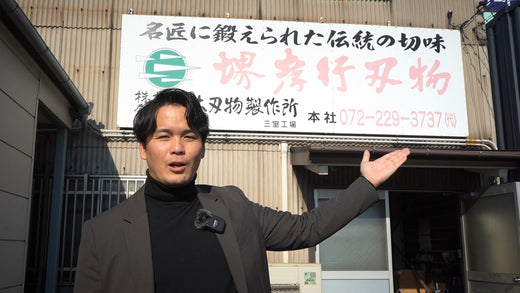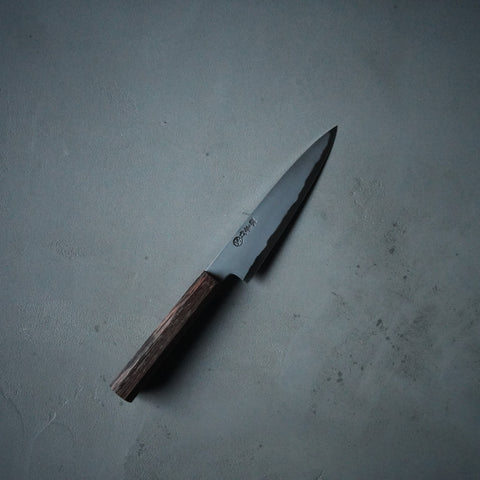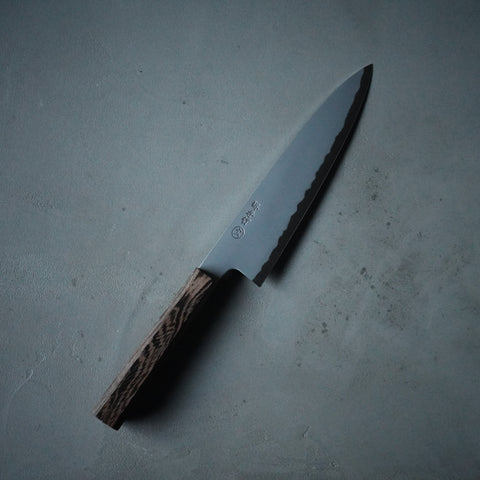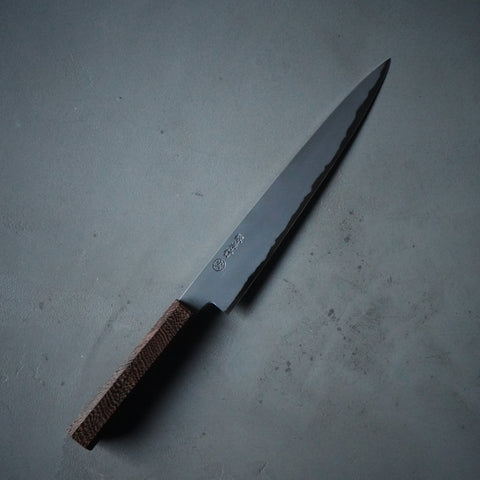
The division of labor that has supported the tradition of Sakai forged knives - blacksmiths, sharpeners, and wholesalers. This system, in which each person perfects their specialized skills to produce knives, has faced the challenge of a decline in the number of craftsmen in recent years. Aoki Cutlery Manufacturing, known for its Sakai Takayuki brand, also originally started out as a wholesaler. However, in order to train the next generation of technicians, the company has taken the initiative to have its employees apprentice under craftsmen, embarking on the path of passing on skills.
At the Sanpo Factory operated by Aoki Cutlery Manufacturing, not only the company's employees but also experienced craftsmen gather and work hard on making knives every day. And last year, a new knife, the "Sanpo Model," was born at the hands of a young craftsman. We will share the atmosphere of the factory and the passion for the technology through interviews with the craftsmen.
Blacksmith's challenge

Blacksmith Akihiro Tashiro is passionate about taking on new challenges while protecting the traditions of Sakai. Although it has been four years since he started working as a blacksmith at Aoki Cutlery Manufacturing, he approaches knife making with solid technique and passion.

"The life of a knife depends on how perfectly the two materials, the metal and the steel, can be combined ," says Tashiro. The key to knife-making is heating the two materials in a furnace and hammering them together to form a single unit. Controlling the heating temperature is the most difficult part; if it's too low, the materials won't stick together, and if it's too high, the steel becomes brittle.
"You have to judge the temperature by looking at it with your own eyes . This is the most difficult part, but also the most interesting."

The young Tashiro-san respects tradition but is not afraid of change. " I want to protect the good parts of tradition while also actively embracing new challenges ," he says, giving us a sense of the possibilities for the future.
Tashiro's challenge to connect tradition and innovation will pave the way for the future of Japanese knife making.
The sharpener who breathes new life into knives

The role of the sharpener is to breathe final life into the knives created by the blacksmith. Makoto Togawa , in charge of sharpening at Aoki Cutlery Factory, is responsible for the delicate process of polishing the knives and sharpening the blades.

The "Sanpo Model" knives in particular are characterized by their beautiful, hazy design. Togawa is primarily in charge of sharpening these Sanpo Model knives, and he puts all his heart and soul into the finish. "Because they are double-edged knives, I sharpen both sides evenly and cut the thickness just enough to give them a smooth cutting feel."

"When other people look at the knives I have sharpened and praise me, saying, 'That's nice,' I feel that all my hard work was worth it. That is the most rewarding thing ."
Mr. Togawa pours his careful handiwork into each and every knife. The quality of the Sanpo Model, which combines beauty and sharpness, is born from his dedication and passion.
summary

"The Iron Series, the first of the Sanpo Models introduced today, was created based on the theme of Iron, Water, and Fire. Going forward, we plan to release new knives based on the remaining themes of Water and Fire. I can't wait to see what innovations will emerge.
Sanpo Factory is a place where young craftsmen respect tradition while also unafraid to take on new challenges. Even in the Sakai cutlery industry, there are not many companies like Aoki Cutlery Manufacturing that continue to take the lead in innovative challenges. This attitude is possible only because of solid technology backed by a long history.
I will be keeping a close eye on how Aoki Cutlery Factory will continue to pave the way for the future and how its young craftsmen will grow.















